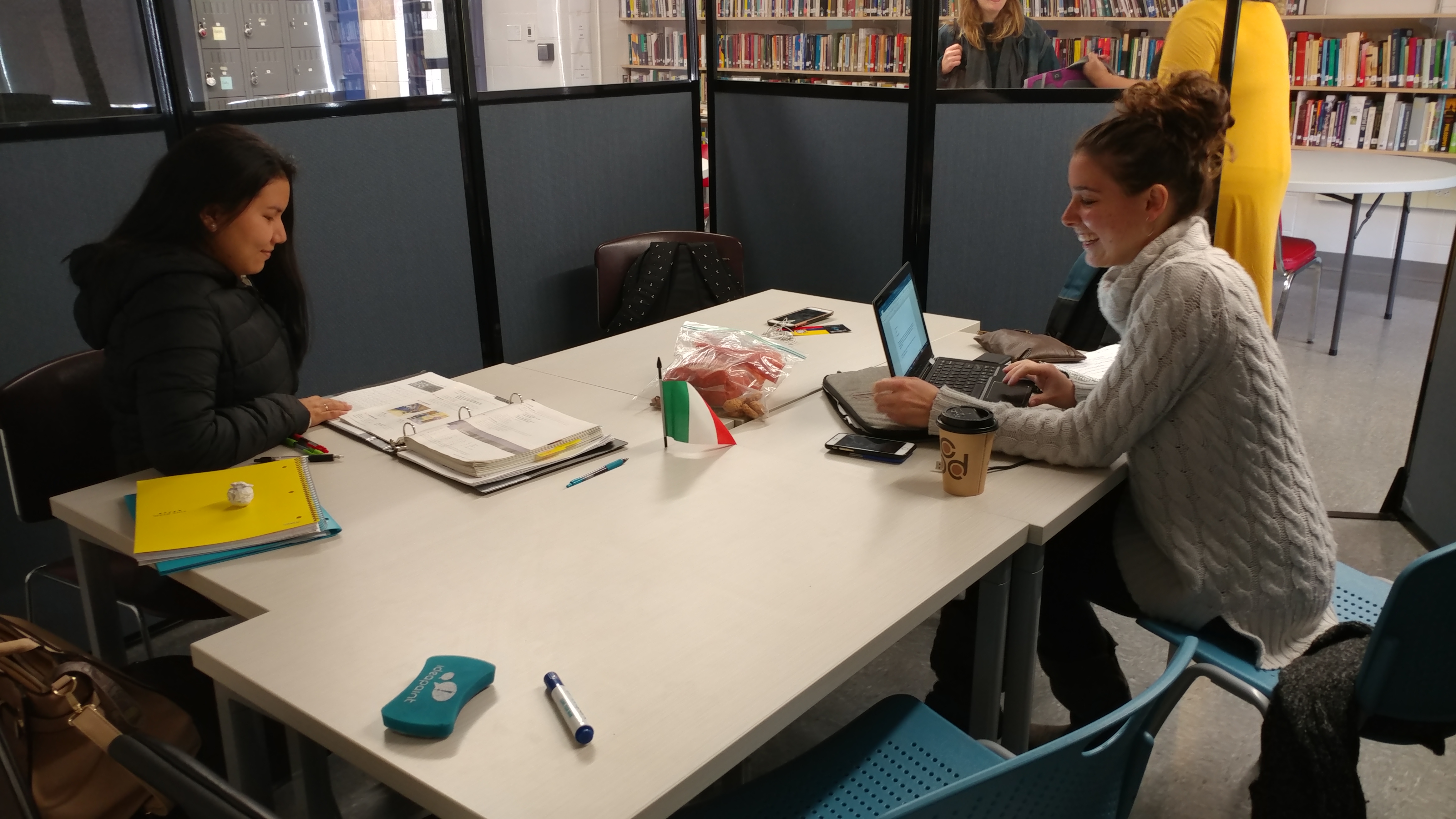By: Asha Tompkins, Community Editor
Many people dream of taking a break from their research papers and hopping on a plane to a different country to experience new cultures and visit landmarks. However, enjoyable traveling often requires proficiency in different languages, which is an element that can be found at the USM language conversation tables.
These tables are volunteer-based get-togethers where students meet in the science building, room 301 A-wing to practice conversing in foreign languages. The Spanish conversation table, is on Mondays from 12:30 p.m. to 1:30 p.m. The French conversation table, on Mondays, from 3 p.m. to 4 p.m. The Somali conversation table, also on Mondays, from 4 p.m. to 5 p.m. The Italian conversation table, on Thursdays from 12:30 p.m. to 1:30 p.m.
The popularity of these tables vary throughout the semesters, said assistant professor of linguistics and coordinator of the language tables, Jeanne Heil.“This is only the second semester we’ve had them so they’re still gaining popularity,” said Heil. “On typical weeks we have anywhere from one to two students but there’ve been weeks there are four to five.”
According to Heil, the tables were started after the linguistics department took over languages in Fall of 2017. There was a tradition of creating language events several years beforehand.
“It went into its own department and we decided we wanted to start doing those extra things for students again,” said Heil. “So, we started tutoring officially last year as well and then we started conversation tables.”
What’s special about these tables are the fact that students in those specific language courses engage with each other, whether they’re at a beginning or an intermediate level.
“If someone comes in from a lower level class and needs a little more help, they might play a game,” said Heil. “If someone comes in at a higher level and it’s just them and the table people [volunteer coordinators], they might talk about life and future plans.”
Kennedy Larson, the volunteer for the Italian conversation table, described that the meetings are engaging and fun, especially if participants truly have an interest in practicing the language.
“I bring some Italian snacks, it’s usually around lunch time so people can bring their lunch and talk,” said Larson. “Most of the people that have come through so far have been from the 100s classes, so I just get a feel of what they’re doing in their class so far and then help them with their conversations.”
The beginner conversations start with basic phrases like “Hey, how’s the weather today?” and “What have you been doing?” Larson explained that they also speak English since not all of the participants are fluent.
“It [learning languages] just kind of exploded [in popularity] because people have been so interested,” said Heil. “That kind of goes along with the classes themselves which have also exploded. We had to ask for four extra sections of 101 [beginner classes] this semester; there are usually only one or two.”
Even with an abundance of students in the language programs, not quite as many of those student participate in the language conversation table. The ones who do attend make the most of their experience, as their conversations typically comprise of two people.
“I deeply understand the difficulties of learning a new language,” said Mao Ding, a student from China. “Especially [in learning how] I should utilize it correctly and fluently without making misunderstanding or confusion.”
Ding voiced that the significance of learning a new language contributes to expanding an individual’s horizons in gaining perspective, as well as eliminating bias.
“To Chinese learners, I admire their courage [to take on the] challenge one of the most difficult language[s] of the world. Even if Chinese is my first language, I spent a lot of time and effort to learn it when I was a child. I know the obstacles the learner might encounter.”
Larson said she finds that many people go through their life doing what’s necessary for survival, but not what they want to do simply for the joy of the experience.
“They don’t do what they want to do until it’s too late, when they have kids and are in their 50s,” she said. “It’s not going to be as fun travelling around, speaking languages.”
Larson added that languages take a lot of time to learn, so the sooner one starts the better.
“It’s not something that’s supposed to be time consuming or stressful, it’s more to just do it for fun,” said Larson. “So do it now. Don’t think too hard about priorities or anything that you have to do. Do what you want to do, then combine it with what you have to.”

